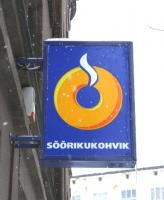Canadians are proud to have their own home-grown Tim Horton’s. We supposedly consume the most doughnuts in the world and have the most doughnut stores per capita. But we don’t yet have a national holiday celebrating our little sweetie, like Swedes celebrate våffeldagen (waffle day) on March 25, their very own twist on the Feast of the Annunciation.
Doughnuts have a disputed history. One theory suggests that they were introduced into North America by Dutch settlers, since they were first called by the Dutch name olykoeks (“oily cakes”). American Hanson Gregory claimed to have invented the ring-shaped doughnut in 1847 aboard a lime-trading ship when he was sixteen years old. Dissatisfied with the greasiness and often raw centre of regular doughnuts, he claimed to have punched a hole in the center of the dough with the ship’s tin pepper box.
The first written recording of the word doughnut (resembling “nuts” of fried dough) was in New York in 1809 and the first printed use of the bastardized form donut appeared in the Los Angeles Times in 1929, ironically in an article complaining about the decline of spelling.
Defined as a sweet, deep-fried (friteeritud / õlis keedetud) piece of dough or batter, the two most common types are the torus-shaped ring doughnut (sõõrik) and the filled doughnut (moosipall – jam ball). Sõõrik comes from the word sõõr, meaning ring or circle, as any of you who have done rahvatantsu (Estonian folk dancing) know.
Its other pet name, most likely Russian in origin is pontshik. As for the doughnut hole, or Timbit for all you Timmy’s fans, a similar concept has made it to Eesti in the form of a relatively new deep-fried snack called kohupiimapallid (cottage cheese balls). They certainly look like doughnut holes, but are packed with substantially more protein, taste and calories.
If the bagel can be called the doughnut’s distant cousin, then the bagel of Estonia is the baranka (as per its Russian-origin name) or the Estonianized rõngik, from the word rõngas, also meaning ring or circle. Rõngikud are baked and come in a large, soft, almost pretzel-like size and a small, hard variety (perfect for teething babies). There are plain, vanilla and poppy-seed varieties.
Jam-filled doughnuts, moosipallid or jam balls in Estonian, no doubt descend from a long, illustrious line of greasy predecessors including the German Berliner and Polish paczki. Homer Simpson need not suffer from homesickness in any port of call.
Donuts international (8)
Archived Articles | 27 Mar 2008 | EWR
Viimased kommentaarid
Kommentaarid on kirjutatud EWR lugejate poolt. Nende sisu ei pruugi ühtida EWR toimetuse seisukohtadega.
Touché!!
I'm surprisded that the normally bright bladed intellect of Maxim has missed it the real story that is embedded here like the eye of a snake in a boiling stew of red herrings and sour turnips:
What is thin-as-a-reed Riina doing eating buckets full of donuts in the proximity of the Amertican Embassy in Tallinn? Has she joined the rotarians too? And Swedish pancakes in Haapsalu with the rannarootslased. Get it? Rotarians, Rootslased. Not to mention hanging out with all those Rotaalased at "friendly" international matches held during blizzards to conveniently, perhaps too conveniently, shielding the truth from view. Is all this co-incidence? I think not !!
What is thin-as-a-reed Riina doing eating buckets full of donuts in the proximity of the Amertican Embassy in Tallinn? Has she joined the rotarians too? And Swedish pancakes in Haapsalu with the rannarootslased. Get it? Rotarians, Rootslased. Not to mention hanging out with all those Rotaalased at "friendly" international matches held during blizzards to conveniently, perhaps too conveniently, shielding the truth from view. Is all this co-incidence? I think not !!
Maxim brings light to the issue of security, and the inescapable fact that the contemporary world has stepped back in time, and in its wisdom has globalized the nature of the former Cold War. Maxim's accurate assertion can only lead to draw such a conclusion.
Archived Articles
TRENDING





















